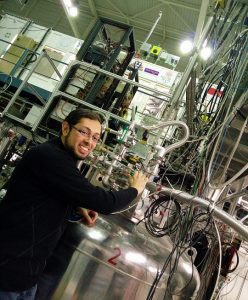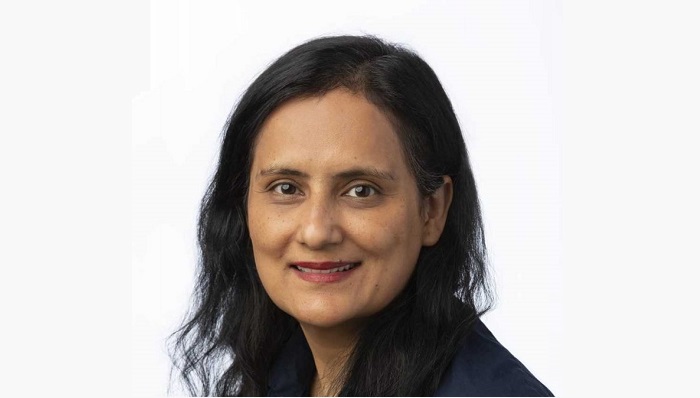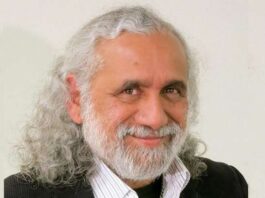It was a fine summer day in 2012 when I first encountered a surprising concept in physics, that of anti-particles and antimatter. My instructor told me that inside the atomic nucleus, when a proton decays into a neutron, it emits a positron (anti-electron), a particle having the same mass and opposite charge as an electron. This process is also known as beta-positive decay.
In recent years, Pakistan has slowly come out of a deplorable state scientific stagnation and improved its credentials within fundamental research. We have produced excellent young scientists, whose research has been published in the leading journals in the world. Nearly one-and-a-half centuries old UK based journal Nature is one of them.
It is the dream of every scientist to be published in Nature and I was flabbergasted and astonished when I heard of a young Pakistani scientist, Muhammed Sameed, with four publications in Nature in 2016 and 2017. I have contacted him to learn more about him and his research work. He hails from the twin cities of Rawalpindi and Islamabad and completed his A levels from Beaconhouse Margalla Campus in 2007. Subsequently he made his way to the Stanford University Mathematics Camp in the same year, which marked the beginnings of his celebrated career. He completed his Bachelors in physics and mathematics at Cornell University, Ithaca, New York in 2011 and Masters in material sciences and engineering at KAUST, Saudi Arabia in 2012. Then he went on to Swansea University UK for doctoral studies.
Sameed was one of the two Pakistani students who were selected to take part in the CERN Summer Students Program in 2011 (the other was Rabia Aslam from LUMS). CERN, a dream institution for every physicist, paved Sameed’s way to become a successful researcher. His persistent determination and sharp-witted personality has made him the leading young physicists from Pakistan at the international stage today.
At CERN, Sameed is part of the ALPHA experiment which aims to study universe through fundamental symmetries between matter and antimatter. In August 2017, I came across ALPHA’s groundbreaking research published in Nature, “Observation of the hyperfine spectrum of antihydrogen”. I then decided to interview Sameed, one of the co-authors of this article, on the technical aspects of his work. This is what I asked from this doughty and gutty personality.
- Describe your current research and theoretical framework you used in developing your research?
Broadly speaking, my research involves studying antimatter. The story of antimatter began in the late 1920s when Paul Dirac, a British physicist, was working on quantum mechanics. He discovered in his equations that in addition to the electron, there should exist another particle with the same mass as the electron but opposite charge. This antielectron (also called positron) was discovered in 1932. Since then, a variety of antimatter particles have been discovered, including the antiproton and the antineutron. Today, the theoretical framework that underpins the study of antimatter is known as the Standard Model of Particle Physics. According to the Standard Model, for every particle that exists, there should be an antimatter counterpart with properties exactly the same (like mass) or exactly the opposite (like charge). In simple terms, matter and antimatter particles are mirror images of each other.
- Why do you choose antihydrogen specifically for your experiment?
Hydrogen, the combination of a proton and an electron, is the simplest atom known to man. It has been extensively studied by scientists for the past two centuries and its properties are extremely well-understood. The antimatter equivalent of hydrogen is antihydrogen, made up of an antiproton and a positron. It is the simplest and currently the only stable antimatter atom we can make in the lab. Recent improvements in antihydrogen production and trapping techniques mean that we can keep the atoms in our apparatus for a long time and make precise measurements.
- How would you explain the broader significance of your research to an educated layperson?
The primary objective of studying antihydrogen is to improve our understanding of the universe. By measuring its properties very precisely, we can have a better grasp on the world of antimatter, and perhaps find out if antimatter exhibits any unexpected or peculiar features. In addition to this purely scientific endeavor, there are significant real-world applications that use antimatter on a regular basis. For example, the medical imagining technique called Positron Emission Tomography (PET) is routinely used in hospitals to image the brain and diagnose cancers. Scientists are also investigating the use of antiprotons to treat certain types of cancers.
- What is the significance of ALPHA experiment at CERN in the understanding of universe?
As mentioned earlier, the best description of our universe that we have today is given by the Standard Model, which says that both matter and antimatter should have been created in equal quantities at the beginning of the universe. This is problematic however, since the universe we observe with our telescopes is largely composed of normal matter and extremely small quantities of antimatter. What happened to the rest of the antimatter? Did it simply decay and vanish? Or is it hiding in some corner of the universe? These are the types of questions ALPHA is trying to find the answers to.
- What are your future research plans for ALPHA experiment?
My colleagues and I are currently in the process of building a new device called ALPHA-g, where g stands for gravity. We would like to understand how antimatter atoms interact gravitationally with normal matter. Although we expect antimatter atoms to fall down towards the earth just like regular atoms, it is equally possible that antimatter atoms fall upwards, or don’t move in either direction. The best way to test this is to actually make a large number of antihydrogen atoms in a vertical trap and then release them to see in which direction they go. I make the experiment sound very simple, but it is extremely difficult to execute since it requires an intricate assembly of specialized apparatus that must be designed, built, and tested at a considerable expense before it can finally begin to deliver some results.
- Can this experiment prove itself as a cornerstone in the formulation of grand unification theory?
Presently, Grand Unified Theories cannot be probed directly because of the extremely high energies that would be needed to test them. However, such theories may explain the apparent matter-antimatter asymmetry in the universe and it is extremely important to test Grand Unified Theories using indirect methods such as proton decay or the properties of neutrinos. Simply speaking, the ALPHA experiment is a small piece in a very big puzzle!
- For a normal physics student and a layman, Higgs boson (usually termed as God Particle) is a fascinating particle. Does it have any effect on your work?
The Higgs boson was one of the key pieces of the Standard Model that was missing until its discovery in 2012. And although the Standard Model is one of the most successful theories to describe our universe, it still leaves many questions unanswered, including the issue of matter-antimatter asymmetry in the universe. By the way, if you don’t already know why the Higgs boson is called the God Particle, you should definitely read about it to understand that most physicists don’t like that name at all!
- What’s a scientist’s perception about antimatter and what was it that led you into antimatter?
Antimatter is one of those things that most people, including scientists, never hear about in their life unless they are active readers or researchers. When I first encountered the concept of antimatter, I was fascinated to learn that something like mirror images of particles could even exist. And not only that, but the fact that scientists could actually trap and study them in a lab was simply mind-blowing. In 2011, I was very fortunate to be selected for the CERN Summer Student Program and had the opportunity to see the antimatter experiments in person. This was the final nudge that convinced me to apply for a PhD in antimatter physics.
- Could you tell us about your long-range plans and commitment to CERN? Are you involved in any ongoing project (or projects)?
In today’s rapidly-changing, increasingly interconnected world, it is difficult to make any long term plans about one’s future. This is true even more so in the world of research, where competition is high and adaptability and freedom of movement are paramount in seeking out the best opportunities. Right now, it looks like CERN will continue to be the world leader when it comes to particle physics and antimatter research. For a young physicist like myself, I couldn’t think of a more suitable place to be in in the foreseeable future.
- How would you involve graduate students in your research? Is there any or will any scholarship be initiated for research in CERN graduate students?
In 2016, Pakistan became an Associate Member of CERN, opening up a range of possibilities for Pakistanis to take part in CERN’s research framework. One place to look for such opportunities is the Careers at CERN website. Students in particular should consider applying for the CERN Summer Student Program, which acts as a gateway to bring exceptional talent to CERN and show what research really looks like. I also want to stress that CERN is not just for physicists: there are engineers, computer scientists, technicians, supporting staff, and administrators who are essential for the research to take place. For students who are interested in a specific subfield of physics, I would recommend that you do your research on the topic and contact professors directly to express your interest.







